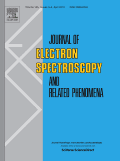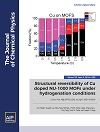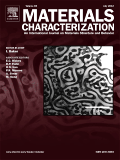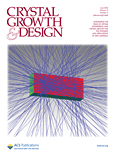
JOURNAL OF ELECTRON SPECTROSCOPY AND RELATED PHENOMENA
Scope & Guideline
Unlocking the Mysteries of Electron Interactions
Introduction
Aims and Scopes
- Electron Spectroscopy Techniques:
The journal covers a wide range of electron spectroscopy methods, including X-ray photoelectron spectroscopy (XPS), Auger electron spectroscopy, and angle-resolved photoemission spectroscopy (ARPES), focusing on the development and application of these techniques in various materials. - Material Characterization:
Research articles often explore the electronic structure and chemical properties of various materials, such as metals, semiconductors, and complex oxides, utilizing advanced spectroscopy techniques to provide insights into their functional properties. - Theoretical and Computational Studies:
The journal publishes studies that involve theoretical modeling and simulations related to electron scattering, ionization processes, and the interpretation of spectroscopic data, contributing to a deeper understanding of electron-matter interactions. - Applications in Nanotechnology and Catalysis:
A significant focus is placed on the application of electron spectroscopy in the fields of nanotechnology and catalysis, where researchers explore the electronic properties and behavior of nanostructured materials and catalysts. - Emerging Techniques and Innovations:
The journal highlights innovative methodologies and advancements in instrumentation that enhance the capabilities of electron spectroscopy, including new detector technologies and experimental setups.
Trending and Emerging
- Time-Resolved and Ultrafast Spectroscopy:
There is a growing interest in time-resolved and ultrafast electron spectroscopy, which allows researchers to investigate dynamic processes in materials at femtosecond timescales, revealing insights into electronic dynamics and charge transfer. - Integration of Machine Learning and AI:
The incorporation of machine learning techniques in the analysis of spectroscopic data is on the rise, showcasing how computational methods can enhance interpretation and prediction in electron spectroscopy. - Environmental and In-Situ Studies:
Emerging themes include the application of electron spectroscopy in environmental studies and in-situ analyses, where researchers examine materials under realistic conditions, reflecting the growing importance of studying materials in their operational environments. - Nanostructured Materials and Devices:
Research focusing on the electronic properties of nanostructured materials and devices is increasingly prominent, as advancements in nanotechnology drive the need for detailed spectroscopic characterization of nanoscale systems. - Hybrid and Multifunctional Materials:
Interest in hybrid and multifunctional materials is expanding, with studies exploring the electronic interactions within complex systems that combine different materials and phases, particularly in catalysis and energy applications.
Declining or Waning
- Traditional X-ray Absorption Spectroscopy:
Research focusing solely on traditional X-ray absorption spectroscopy (XAS) techniques has decreased, possibly due to the rise of more sophisticated and integrated methods that combine XAS with other spectroscopic techniques. - Basic Electron Scattering Studies:
The frequency of publications centered exclusively on fundamental electron scattering experiments has waned, as researchers increasingly integrate these studies with more practical applications and advanced theoretical frameworks. - Static Measurements:
There is a noticeable reduction in papers that report static measurements without dynamic or time-resolved components, reflecting a broader trend toward exploring transient phenomena and ultrafast processes in materials. - Single Technique Studies:
The journal has seen a decline in articles that focus exclusively on a single technique, as interdisciplinary approaches that combine multiple spectroscopic methods gain traction.
Similar Journals

JOURNAL OF NANOPARTICLE RESEARCH
Unveiling the Potential of Nanoparticles for a Better FutureJOURNAL OF NANOPARTICLE RESEARCH, published by SPRINGER, is a pivotal platform in the interdisciplinary field of nanotechnology, encompassing atomic and molecular physics, bioengineering, chemistry, condensed matter physics, and materials science. Operating since 1999 and converging through 2024, this journal presents cutting-edge research and innovations in nanoparticle science, aiming to bridge theoretical studies with practical applications. With a diverse scope that attracts articles ranked in various Q2 and Q3 category quartiles across its fields, including Bioengineering and Nanoscience and Nanotechnology, it ranks favorably within Scopus metrics, ensuring high visibility and impact among researchers. While the journal operates under traditional access models, it remains a critical resource for professionals and students alike, empowering them to advance their knowledge and drive future discoveries in this rapidly evolving area of study.

JOURNAL OF CHEMICAL PHYSICS
Illuminating the Path of Scientific DiscoveryJOURNAL OF CHEMICAL PHYSICS, published by AIP Publishing, stands as a premier scholarly source within the realms of physical and theoretical chemistry, as well as physics and astronomy. With an enduring history dating back to 1933 and converging until 2024, this journal has established itself as a cornerstone of the scientific community, evidenced by its prestigious Q1 categorization in multiple fields, including medicine and general physics. It is ranked 37th out of 243 in the general physics and astronomy category and holds a commendable 39th position in physical and theoretical chemistry according to Scopus rankings, highlighting its significant impact in these disciplines. Although not an open-access journal, it caters to a wide audience of researchers, professionals, and students seeking to deepen their understanding of the interactions and dynamics of chemical systems. With its expertly curated content, the JOURNAL OF CHEMICAL PHYSICS continues to play a vital role in advancing knowledge and fostering innovation across its core subjects.

MATERIALS CHARACTERIZATION
Connecting Scholars and Industry for Impactful InsightsMATERIALS CHARACTERIZATION is a leading international journal dedicated to the advancement of knowledge in the field of materials science and engineering. Published by Elsevier Science Inc, this esteemed journal has been disseminating vital research since 1970 and continues to be essential for scholars and industry professionals alike. With an impressive impact reflected in its Q1 quartile rankings across several categories—including Condensed Matter Physics, Materials Science, Mechanical Engineering, and Mechanics of Materials—MATERIALS CHARACTERIZATION stands out as a premier outlet for innovative studies and technical advancements. Researchers can access a wealth of peer-reviewed articles that explore properties, characterization techniques, and applications of materials, fostering interdisciplinary collaboration. With a commitment to high-quality research and comprehensive review processes, the journal plays a crucial role in shaping the future of materials science, making it an invaluable resource for anyone invested in this dynamic field.

CRYSTAL GROWTH & DESIGN
Unveiling Breakthroughs in Crystal GrowthCRYSTAL GROWTH & DESIGN, published by the American Chemical Society, is a premier journal dedicated to the interdisciplinary study of materials science, condensed matter physics, and miscellaneous chemistry. With an ISSN of 1528-7483 and E-ISSN of 1528-7505, this journal provides a vital platform for the dissemination of innovative research findings from 2001 through 2024, reflecting the dynamic advancements in crystal growth and design methodologies. It is recognized for its impact in the field, earning a distinguished placement in the Q2 quartile across categories of Chemistry, Condensed Matter Physics, and Materials Science for 2023. Researchers engaging with CRYSTAL GROWTH & DESIGN will find a wealth of peer-reviewed articles encompassing cutting-edge experimental techniques, theoretical frameworks, and application-oriented studies. Although not an open-access journal, it remains a critical resource for academics, professionals, and students aiming to enhance their understanding of crystal growth processes and material functionality, with Scopus rankings reflecting its reputable authority within the scientific community.

SPECTROSCOPY AND SPECTRAL ANALYSIS
Fostering Collaboration in Spectroscopic DiscoveriesSPECTROSCOPY AND SPECTRAL ANALYSIS is a pivotal journal published by the OFFICE SPECTROSCOPY & SPECTRAL ANALYSIS in China, dedicated to advancing the field of spectroscopy and its associated techniques. With an ISSN of 1000-0593, this journal provides a platform for researchers, professionals, and students to disseminate innovative studies and findings related to spectroscopy, covering various applications from fundamental research to technological advancements. Although it currently stands in the Q4 quartile for both Instrumentation and Spectroscopy as per the 2023 categorization, it continues to play a crucial role in fostering dialogue and collaboration within the scientific community. The journal features contributions that explore the latest methodologies and applications, making it a valuable resource for those aiming to deepen their understanding and application of spectroscopic techniques. It operates within a competitive landscape, ranked at the 16th percentile in Chemistry (Spectroscopy) and 15th percentile in Physics and Astronomy (Instrumentation), which underscores its targeted influence in these fields. Interested readers can access the journal to stay informed about pioneering research, helping to bridge the gap between theoretical insights and practical applications.

JOURNAL OF ELECTROCERAMICS
Exploring the Intersection of Theory and PracticeJOURNAL OF ELECTROCERAMICS, published by SPRINGER in the Netherlands, serves as a pivotal platform for advancing the field of electroceramics since its inception in 1997. With a keen focus on innovative materials and applications, this journal covers diverse areas encompassing ceramics and composites, condensed matter physics, and electronic materials, significantly contributing to interdisciplinary research. Although currently not an Open Access publication, the journal's engagement in rigorous peer review ensures the dissemination of high-quality research, supported by its respectable Q3 ranking in several relevant categories in 2023. Researchers and professionals will find value in its comprehensive scope, showcasing cutting-edge developments that shape the future of engineering and materials science. The JOURNAL OF ELECTROCERAMICS continues to play a crucial role in bridging theoretical discoveries with practical applications, making it an indispensable resource for students, scholars, and industry experts alike.

Structural Dynamics-US
Exploring the depths of instrumentation and spectroscopy.Structural Dynamics-US, published by AIP Publishing, stands as a premier journal within the fields of Condensed Matter Physics, Instrumentation, Radiation, and Spectroscopy. Established in 2014 and operating under an Open Access model, this journal facilitates a broad dissemination of groundbreaking research, enabling researchers and professionals worldwide to contribute to and engage with cutting-edge developments in structural dynamics. With a significant impact highlighted by its Q1 Quartile rankings across multiple categories, and impressive Scopus rankings—including a noteworthy 13th place in Radiation—Structural Dynamics-US provides a vital platform for scholarly communication and innovation in scientific inquiry. The journal's commitment to accessibility and excellence underscores its role as a critical resource for researchers, academics, and students eager to advance their understanding and application of structural dynamics in various scientific contexts.

Nanoscale Research Letters
Catalyzing collaboration in the world of nanotechnology.Nanoscale Research Letters, published by SPRINGER, is a leading open-access journal dedicated to the rapid dissemination of innovative research in the field of nanoscience and nanotechnology. Established in 2006, this journal provides researchers and professionals with a platform to share their groundbreaking findings across a broad spectrum of applications, including condensed matter physics and materials science. With an impressive Q1 ranking in both Condensed Matter Physics and Materials Science categories as of 2023, it asserts its position as a top-tier publication within the scientific community, bolstered by a 96th percentile rank in the Scopus database. Nanoscale Research Letters not only emphasizes the importance of nanotechnology research but also ensures that its findings are widely accessible, adhering to its open-access mandate. Scholars and students alike are encouraged to contribute to and engage with this dynamic resource, fostering collaboration and innovation in the ever-evolving world of nanoscience.

RUSSIAN JOURNAL OF INORGANIC CHEMISTRY
Pioneering Research in the World of InorganicsThe Russian Journal of Inorganic Chemistry is a distinguished publication that delves into the fundamental and applied aspects of inorganic chemistry. Published by MAIK Nauka/Interperiodica/Springer, this journal has established itself as a vital resource for researchers, professionals, and students alike, contributing significantly to the fields of Inorganic Chemistry, Materials Science, and Physical and Theoretical Chemistry. With an ISSN of 0036-0236 and an E-ISSN of 1531-8613, the journal is indexed for easy access and citation. Though the journal currently operates under a subscription model, its commitment to disseminating high-quality research and fostering scientific discourse remains steadfast. The journal has been maintaining a consistent record since its inception, and its positioning in the Q3 quartile across various chemistry categories in 2023 underscores its relevance in the academic community. As it continues through its converged years from 1996 to 2024, the Russian Journal of Inorganic Chemistry plays a pivotal role in enhancing the understanding and advancement of inorganic chemistry, making it an indispensable tool for anyone engaged in this dynamic field.

Microporous and Mesoporous Materials
Exploring the Depths of Porosity ScienceMicroporous and Mesoporous Materials is a leading academic journal published by ELSEVIER, specializing in the field of porosity characterization and applications of microporous and mesoporous materials. With an impactful Q1 ranking in various categories, including Chemistry, Condensed Matter Physics, and Materials Science, this journal serves as a vital resource for researchers, professionals, and students focused on advancing the understanding and application of these materials. Established in 1998 and set to continue its influence until 2024, the journal's rigorous peer-review process ensures the dissemination of high-quality research findings. Additionally, its commitment to open access publishing broadens accessibility, fostering an inclusive community dedicated to innovation in nanoscience, materials physics, and engineering. The journal's Scopus rankings highlight its prestigious standing, placing it among the top percentile within pertinent fields. For those engaged in cutting-edge research or education within these sectors, Microporous and Mesoporous Materials remains an essential journal for current advancements and insights.